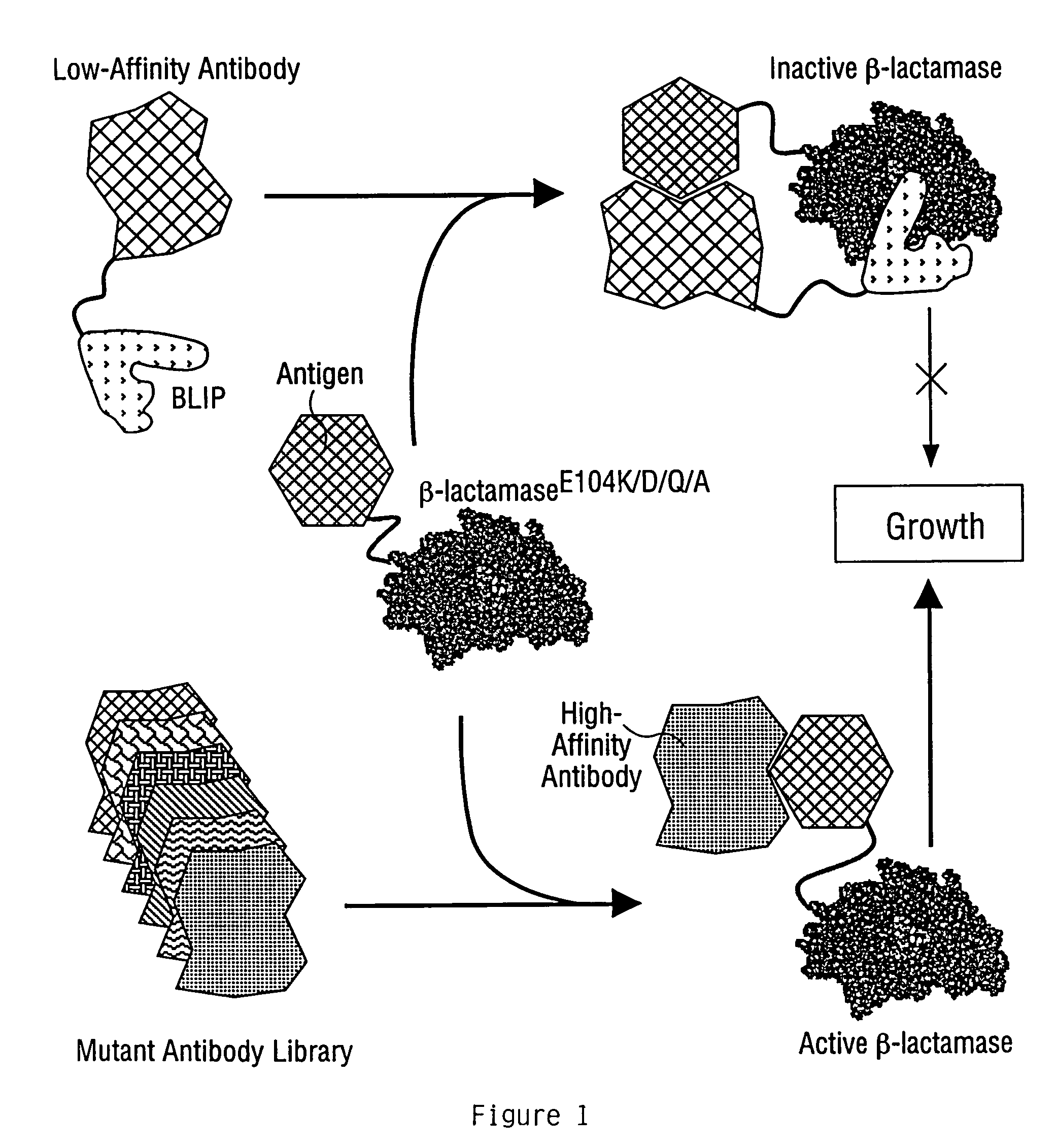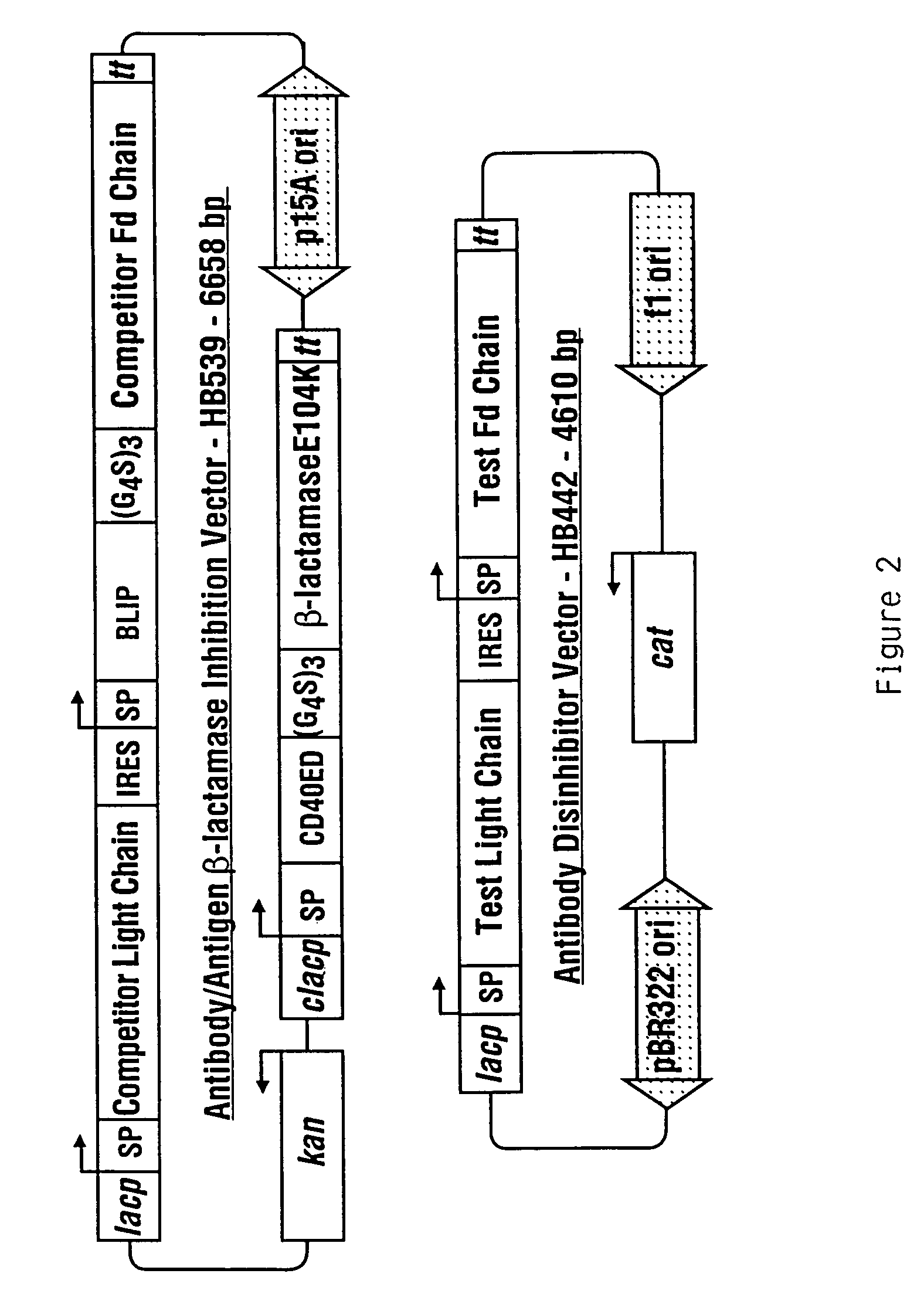Methods for affinity maturation
a technology of affinity maturation and affinity, applied in the field of affinity maturation methods, can solve the problems of increasing on-rates, unable to achieve the effect of increasing the on-rate, and reducing the affinity of antibodies derived from these methods
- Summary
- Abstract
- Description
- Claims
- Application Information
AI Technical Summary
Benefits of technology
Problems solved by technology
Method used
Image
Examples
example 1
Affinity Maturation of an Antibody using a Target-mediated β-lactamase Competitive Activation System
[0170]This example demonstrates the utility of the invention for affinity maturation by demonstrating the selection of a higher-affinity variant of an antibody from a million-fold excess of the parent antibody. A schematic of the general procedure is provided in FIG. 1.
[0171]The antibody used for this example was a mouse monoclonal raised against the extra-cellular domain of the human B-cell activation antigen CD40, and isolated by hybridoma technology. This antibody, designated HB15, had a Kd for CD40 of 7.6 nM, as determined by surface plasmon resonance (Fägerstam et al. (1992) J Chromatog 597: 397-410). A higher-affinity variant of this antibody was subsequently identified which contained two mutations in the third complementarity-determining region (CDR3) of the heavy chain variable region (Vl), which conferred a 12-fold increase in the affinity of the antibody. This variant was d...
example 2
Affinity Maturation of an Antibody using a Cellular Selection System Based on Competitive Reactivation of an Auto-inhibited Reporter (RAIR)
[0177]This example illustrates the use of a RAIR system for antibody affinity maturation. The auto-inhibited reporter is comprised of a responder protein (also referred to in this example as a reporter protein) and an inhibitor of the reporter that are linked genetically so that the reporter is in a constitutively inhibited state. The system further comprises a reactivator protein that binds to the inhibitor competitively with the reporter and with an affinity that is at least comparable to that of the reporter, but which is not high enough to displace the inhibitor from the reporter when the reactivator and the auto-inhibited reporter are not physically linked. However, when the auto-inhibited reporter and the reactivator are each linked to molecules that interact with one another, such as an antibody and an antigen, that interaction brings the ...
PUM
| Property | Measurement | Unit |
|---|---|---|
| Temperature | aaaaa | aaaaa |
| Molar density | aaaaa | aaaaa |
| Molar density | aaaaa | aaaaa |
Abstract
Description
Claims
Application Information
 Login to View More
Login to View More - R&D
- Intellectual Property
- Life Sciences
- Materials
- Tech Scout
- Unparalleled Data Quality
- Higher Quality Content
- 60% Fewer Hallucinations
Browse by: Latest US Patents, China's latest patents, Technical Efficacy Thesaurus, Application Domain, Technology Topic, Popular Technical Reports.
© 2025 PatSnap. All rights reserved.Legal|Privacy policy|Modern Slavery Act Transparency Statement|Sitemap|About US| Contact US: help@patsnap.com



